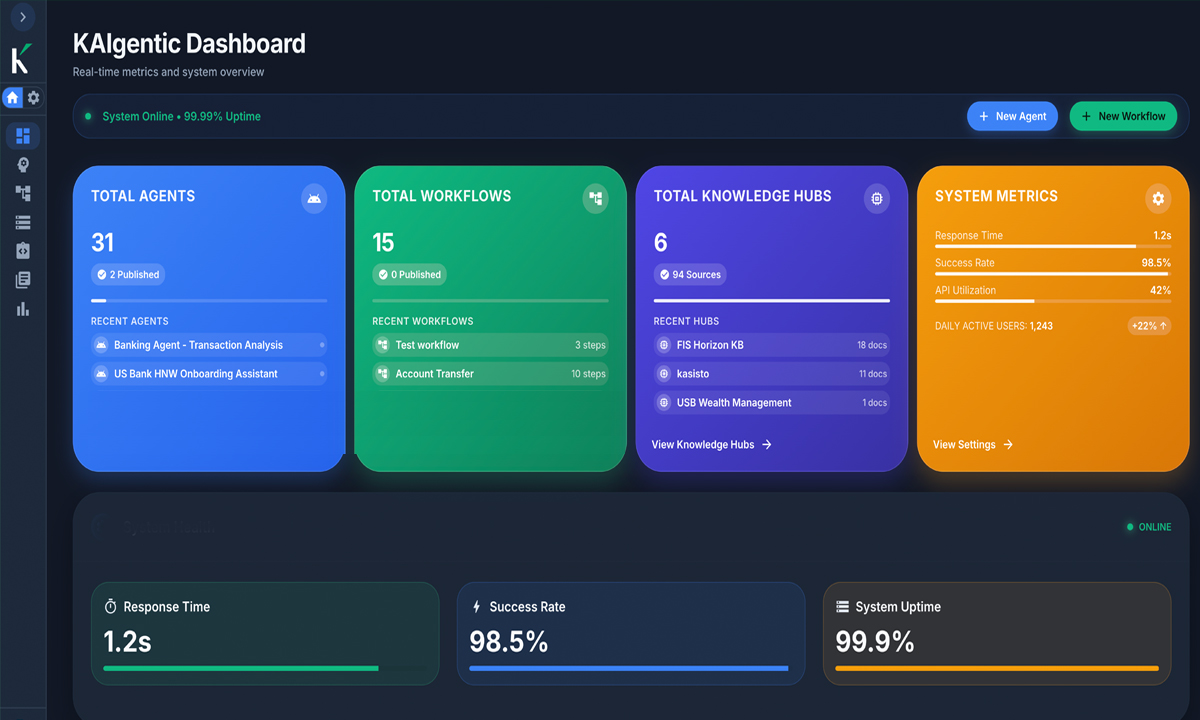An intelligent digital assistant, or IDA, is a forward-facing, “bank-smart” digital solution that addresses customer queries, provides detailed financial information, and acts as the first touchpoint for your brand.
Intelligent digital assistants take the concept of a chatbot to the next level by adding personalized, growth-oriented, and relationship-focused conversations to the tried and true formula of digital customer support. Financial institutions must prepare for the future of digital banking by using conversational AI platforms as their next source of customer engagement.
But before your bank or credit union implements an IDA, it’s important to infuse it with a personality unique to your financial institution. This initial work has several benefits:
- It distinguishes your financial institution from any competition
- It creates a lasting impression in customers’ minds
- It increases engagement among your customers, your employees, and your brand
This process might take an investment of time and resources on the front end, but it’s the first move toward success in the creation of your personalized intelligent digital assistant.
We’ve identified three distinct and tangible steps that will help you to build an intelligent digital assistant with personality.
1. Review Employee Culture & Processes
Creating an IDA with personality is like introducing a brand new banker to your organization, so you’ll want to start by examining your employee culture and onboarding processes.
Values
Have you established core company values? And if you have, are they singular and unique to your company? The Financial Brand studied the core values of 50 banks with assets ranging from the millions up to hundreds of billions. As it turns out, most of them have the exact same standard core values, like Integrity and Teamwork. Your financial institution may even share some of these – how can you translate them to your digital customer experiences?
Whatever your fundamental values and principles are, your IDA needs to embody and reflect them in its daily functions. For example, if one of your core values is sincerity, then perhaps your IDA uses upfront and candid language with customers and finds ways to demonstrate empathy in its language.
Onboarding
Consider the activities each employee participates in during onboarding: teammate introductions, process orientation, integration, etc. Are there potential hurdles to overcome, like organization siloes and misalignment? Are there teams who traditionally might not embrace, or possibly even feel threatened by, the launch of new digital solutions? A digital assistant can actually help you to overcome these issues. If you view your intelligent digital assistant as a new employee with a personality and the ability to converse, then your team is more likely to“welcome” it to your organization.
Discover how your employees work and interact with one another. Use this knowledge to define and set expectations for how your IDA will integrate and interact with the rest of your organization. This will also inform how you introduce and roll out your IDA to internal employees, which is critical to gain buy-in and traction. If you can directly engage the employees from your back office and your branch and call channels in the process of “hiring and training” your digital assistant, the more success you’re likely to experience in introducing it to your customers and members.
2. Determine Your Customers’ Digital Dispositions
Since your IDA will primarily act as a customer-facing solution, it’s important to pinpoint exactly who they will interact with – accomplish this by determining your customers’ “digital dispositions.” If you haven’t done any audience segmentation and identification, now is the time.
Start by curating several essential customer demographic data points, including
- Age
- Gender
- Profession
- Credit score
- Income level
- Marital status
- Education level
- Assets with your financial institution
- Interaction level with any of your existing platform(s)
These demographic data points combine to create three distinct types of digital audiences and digital adoption characteristics:
- Digital Natives, or those who have an innate sense of technology usage, and might struggle with anything except banking through digital means
- Digital Savvy, or those who are inclined to use banking technology, but also prefer the occasional convenience of physical banking
- Digital Skeptic, or those who remain extremely tech-wary and might have an adversarial approach to any new piece of technology
A recent Ipsos-Forbes Advisor survey found that 76% of Americans used their bank’s mobile app to conduct everyday banking tasks within the past year. This study shows that a majority of your customers are probably cognizant of your current digital banking options, and most likely at least fall into the Digital Savvy category.
With your digital audiences identified, you can outline the ways your IDA interacts with your customers. Your IDA will need to be flexible in interacting with all three types of audiences and capable of speaking effectively to each one.
Digital Natives or Digital Savvy customers want quick-turn, accurate, and relevant financial information, and they appreciate an IDA that promptly addresses their issues. Digital Skeptics, on the other hand, need to have trust built up over a period of time. To win these customers over, your IDA could provide contextual information related to their finances, or you could equip employees in your physical locations to educate and explain the benefits of your intelligent digital assistant to this group.
And you may be surprised at the pace and the degree to which the Digital Skeptics embrace your digital assistant. There is something special about personality and conversational interaction that may make the process less intimidating for the digitally averse.
3. Consider Your Brand Voice and Tone
Your brand has a set of characteristics, whether you’ve formally established them or they’ve developed organically. These characteristics inform the foundational messaging you develop and its specific voice and tone.
According to Frontify, a leading brand management company, your brand voice includes the words and language that you use to speak with your audience, but, more importantly, it embodies your brand’s “unique perspective, and the values you stand for.” It also comprises your brand tone and personality. Your brand tone is the attitude with which you convey your values and beliefs; it’s the way you speak.
Whether you’re a neobank, a credit union, or a large financial institution, your brand attributes, characteristics, and foundational messaging provide a framework for your IDA.
A Real-World Example
A number of years ago, one large regional bank performed a brand survey, using pop culture figures, to get a pulse on how the bank was seen in the market. The overwhelming response from their customers? Bob Dole.
However, the bank wanted to be perceived more like Tiger Woods, someone young, focused, aspirational, and approachable. This didn’t match its brand voice, and it affected customer engagement and experience. As a result, the bank worked to refine and modernize its brand, and it worked. With its updated in-market positioning, its customer base grew and its demographics diversified.
When it comes to your IDA, it pays to give this sort of personification some thought. Do you want to convey consummate professionalism, youthful spirit, cheeky irreverence, or something entirely different? Whatever you decide, imbue your intelligent digital assistant with these core tenets. It will help give your IDA a personality specific to your company’s brand and will create the right kind of impression with your customers.
How to Get Started
If you begin your IDA implementation with these three steps, you’ll be well on your way to creating a customer-facing solution that acts as your virtual best banker.
Interested in how an intelligent digital assistant can become the face of your financial institution?
At Kasisto, we remain committed to leading the digital banking industry into a new era of intelligent digital assistants that meet and exceed expectations. We deliver the industry’s most transformative conversational AI experiences, and we’re ready to make your digital assistant the channel for customer engagement.
Check out our Kasisto & BankSouth Case Study, which delves into how one of our clients “upped their game” in the age of digital banking, or take our IDA Personality quiz to learn which IDA personality is best suited for your financial institution.

